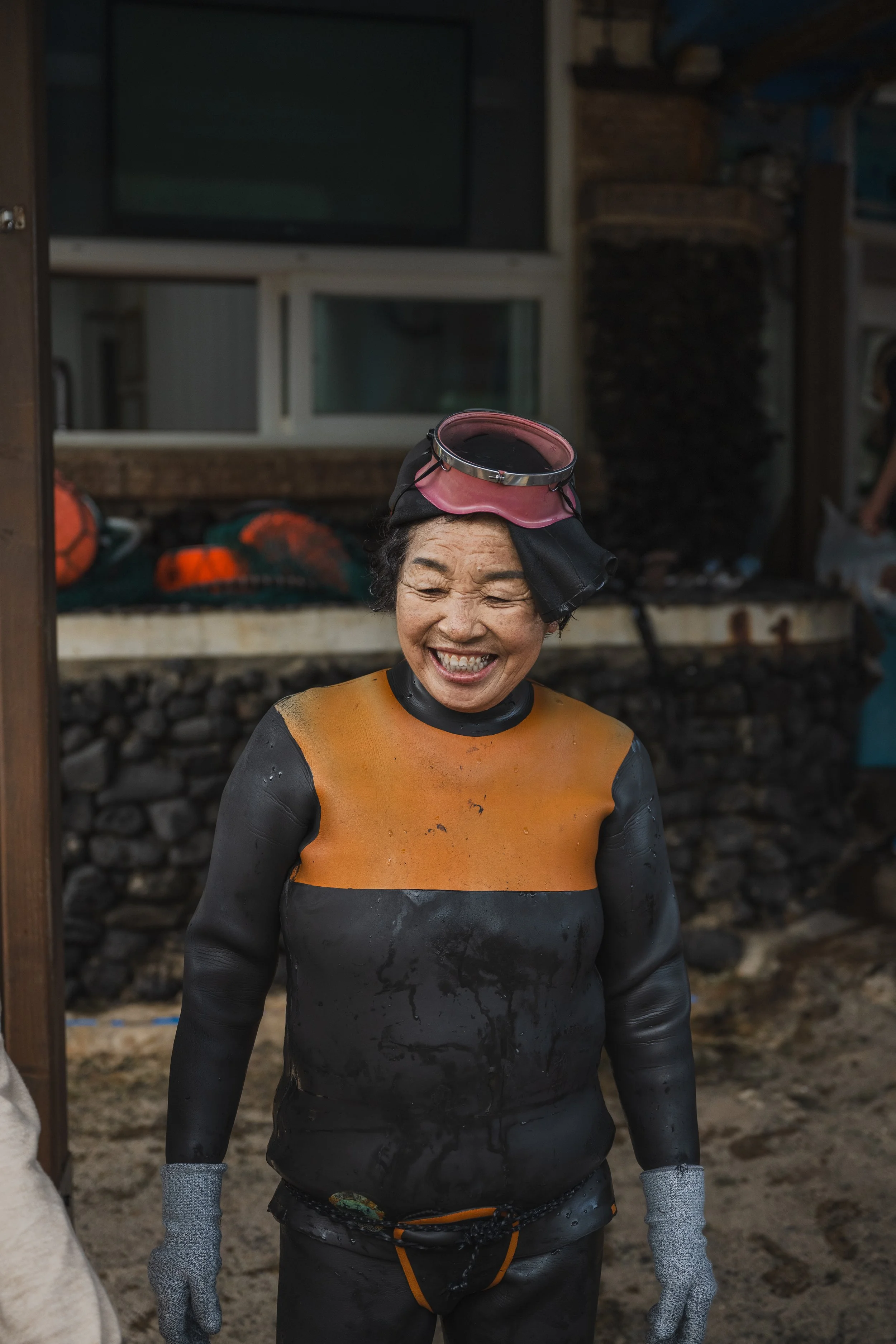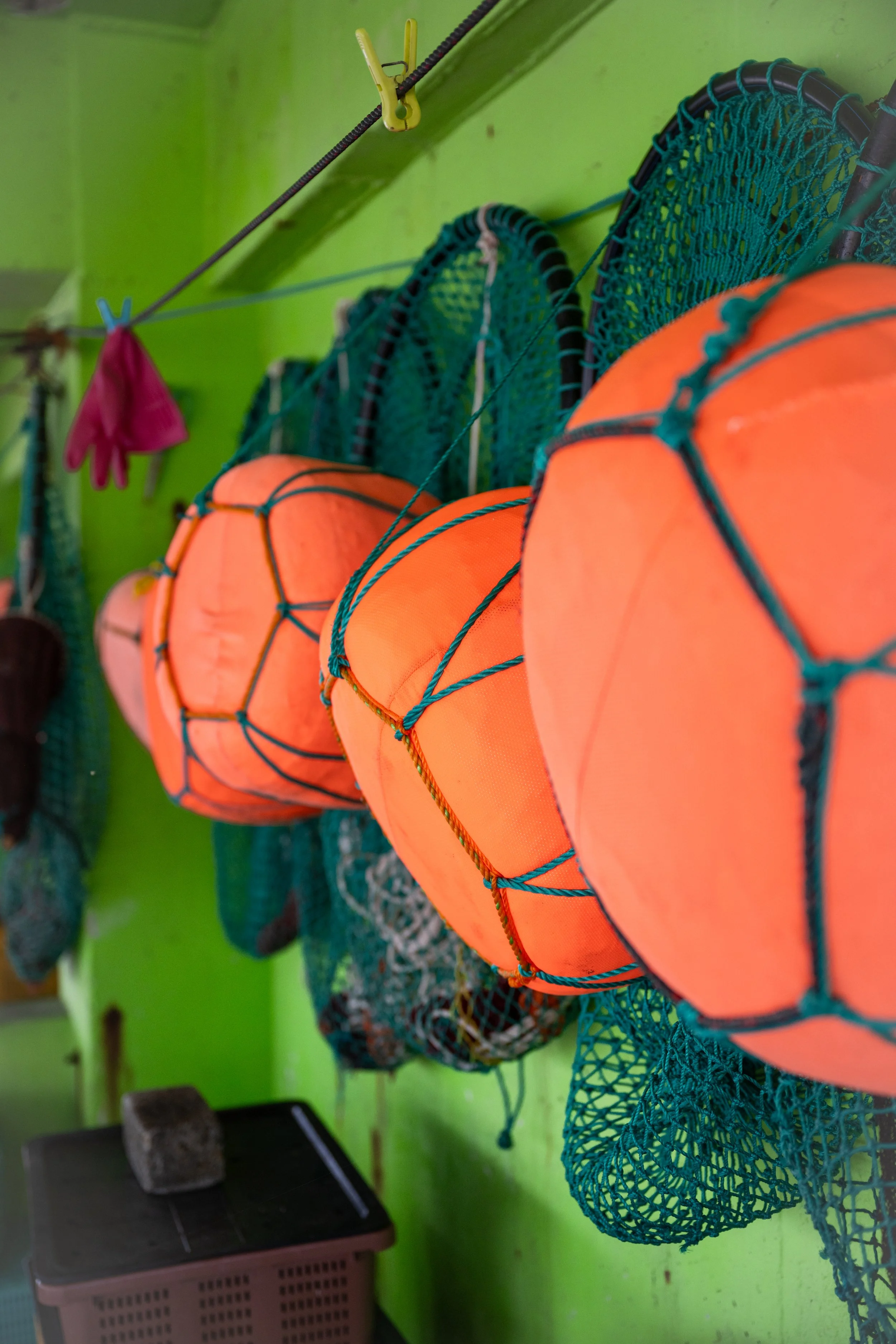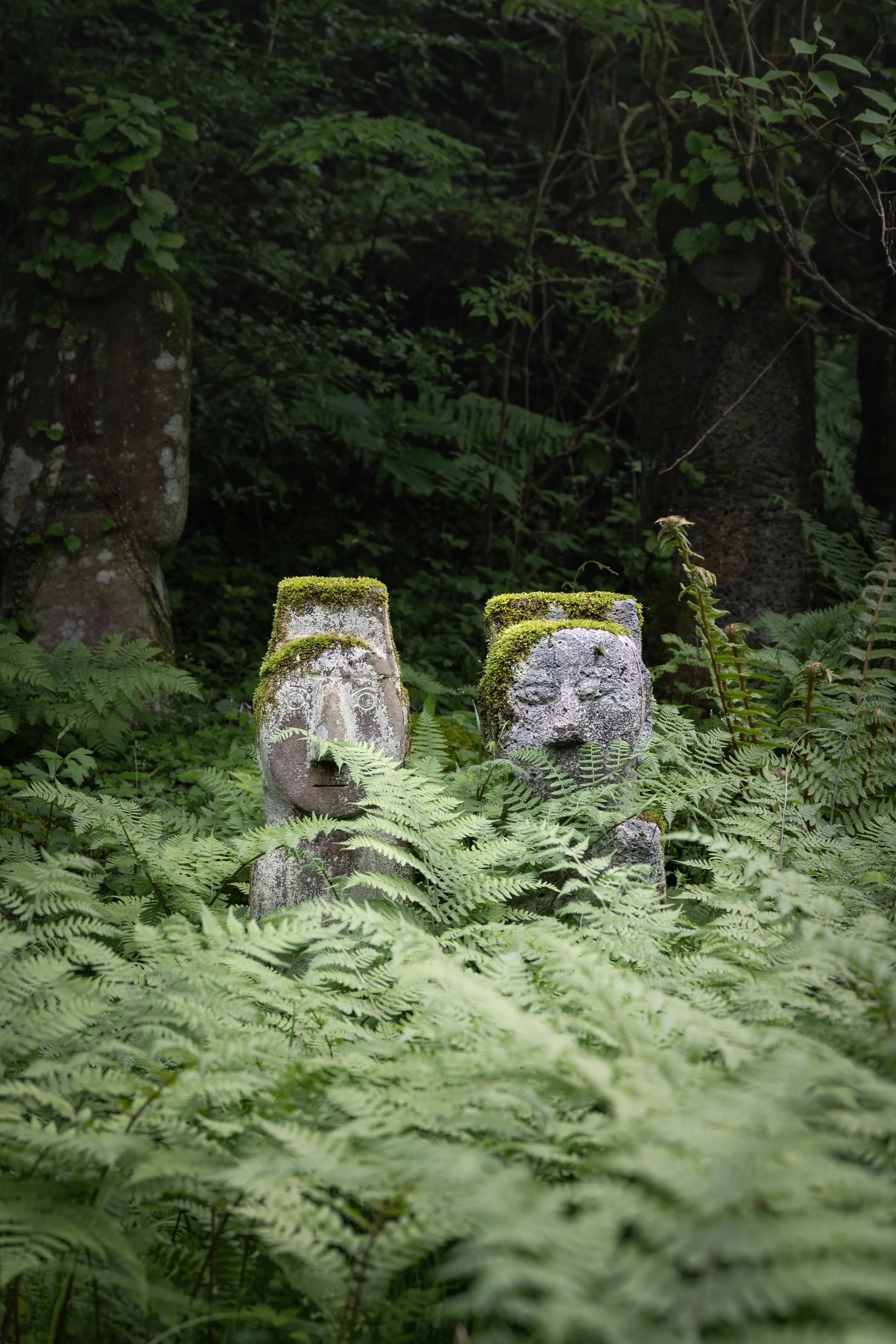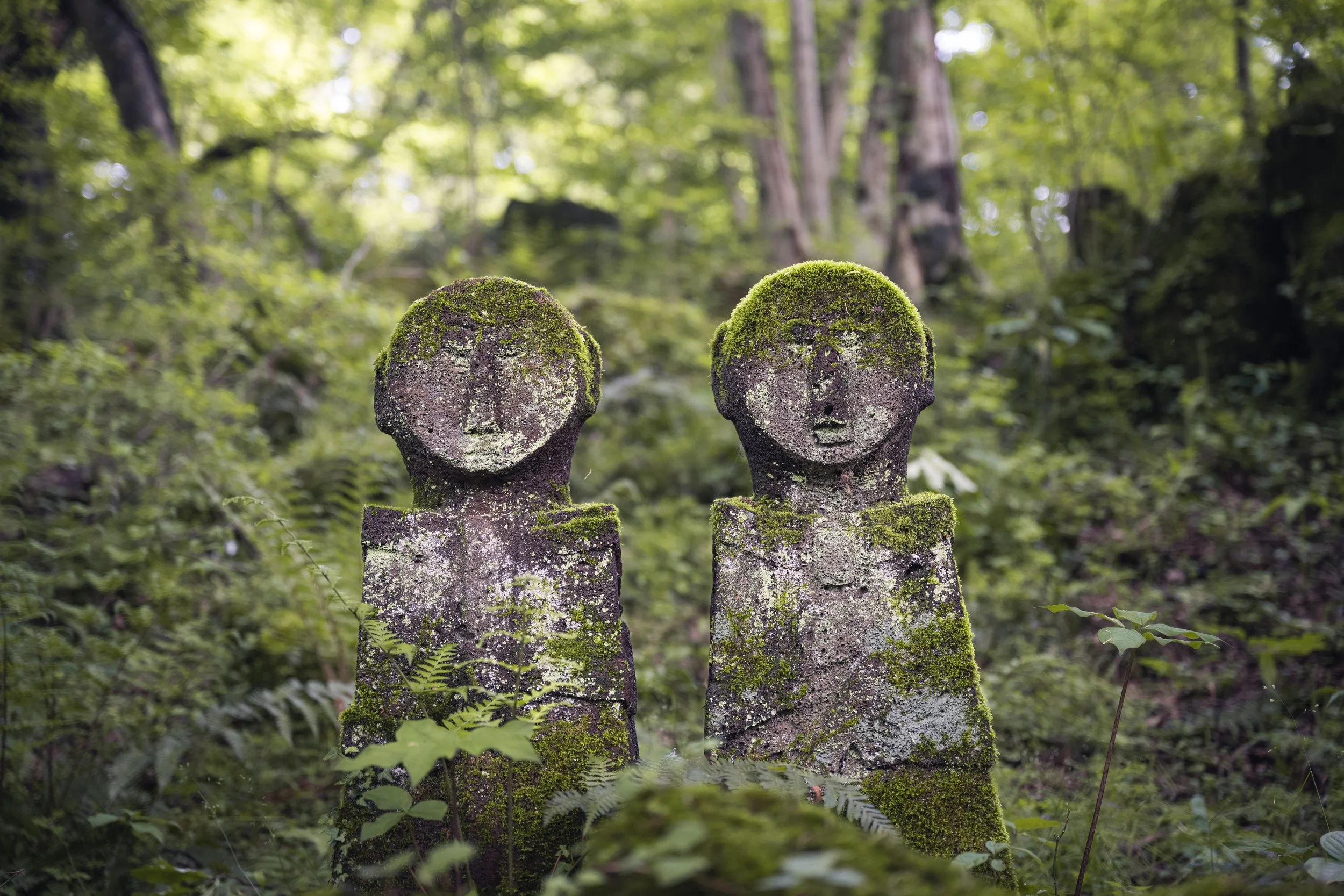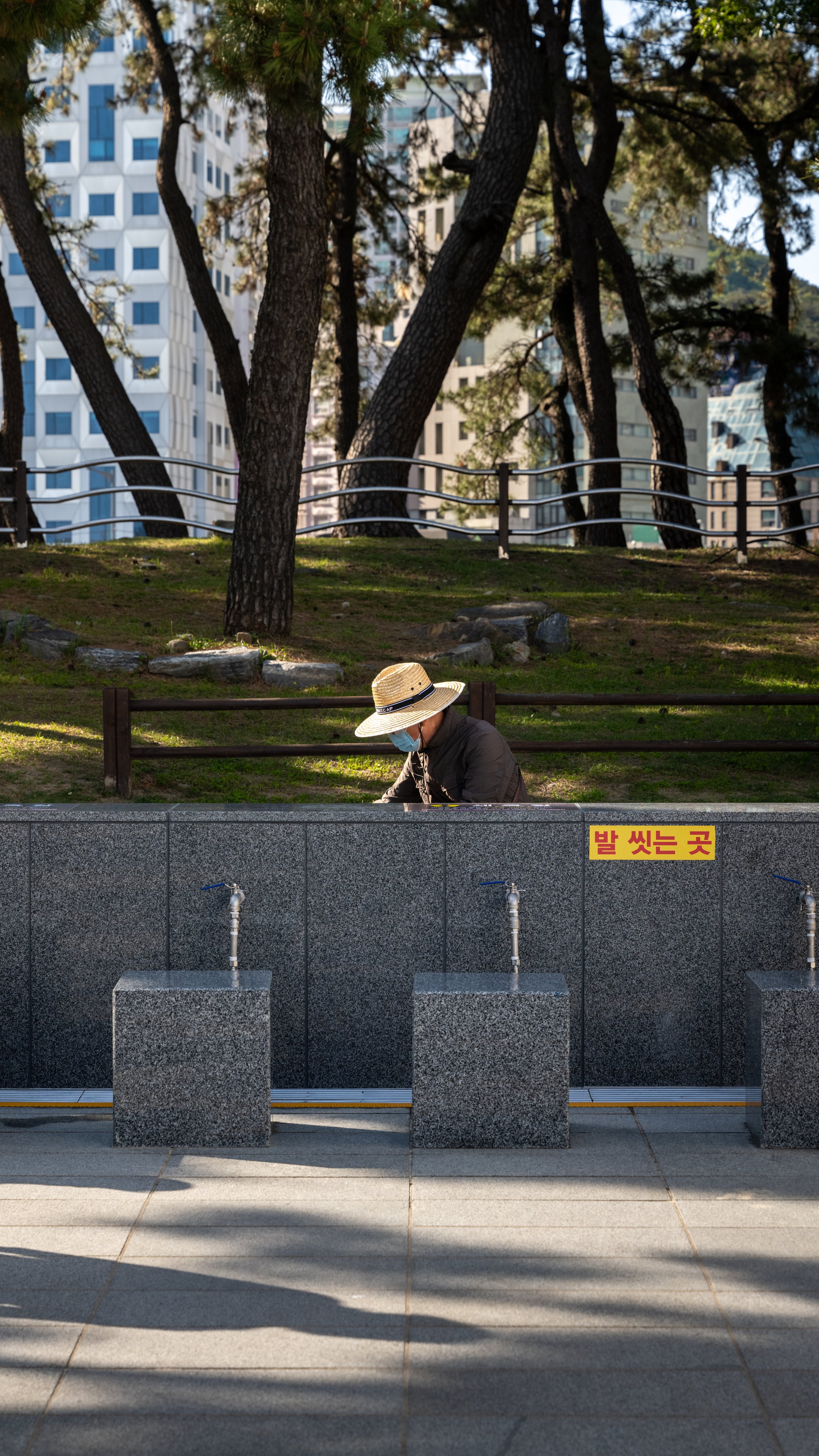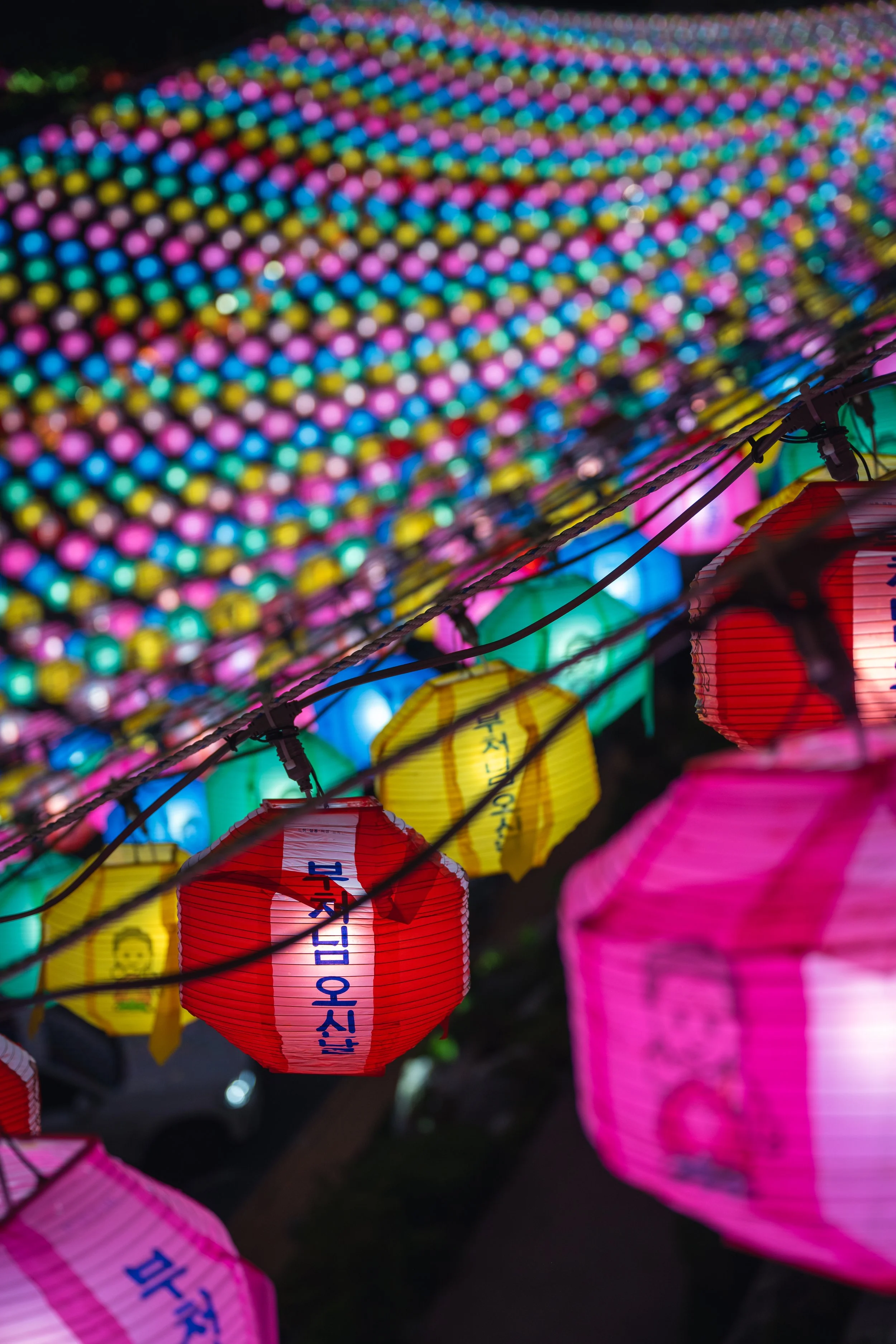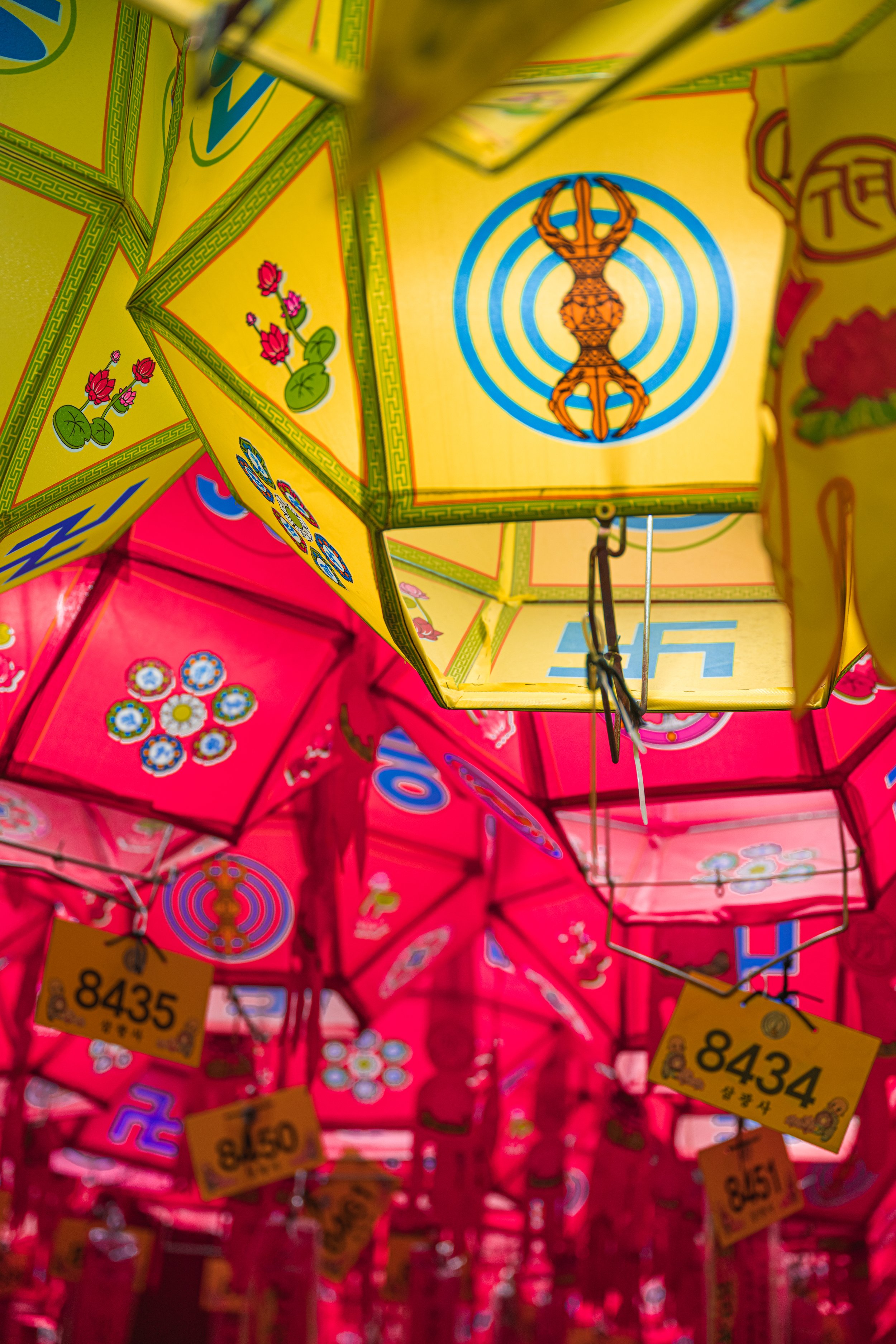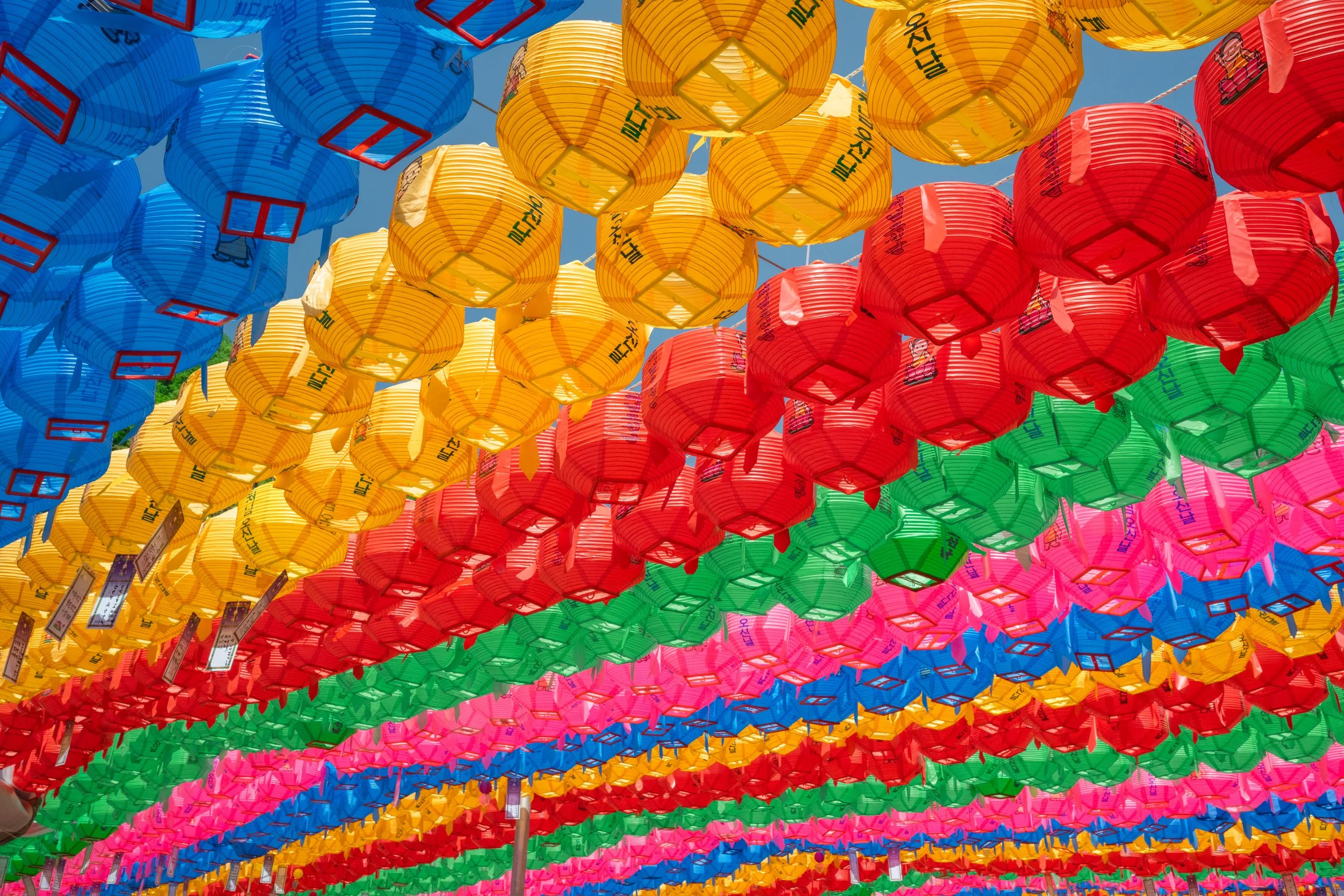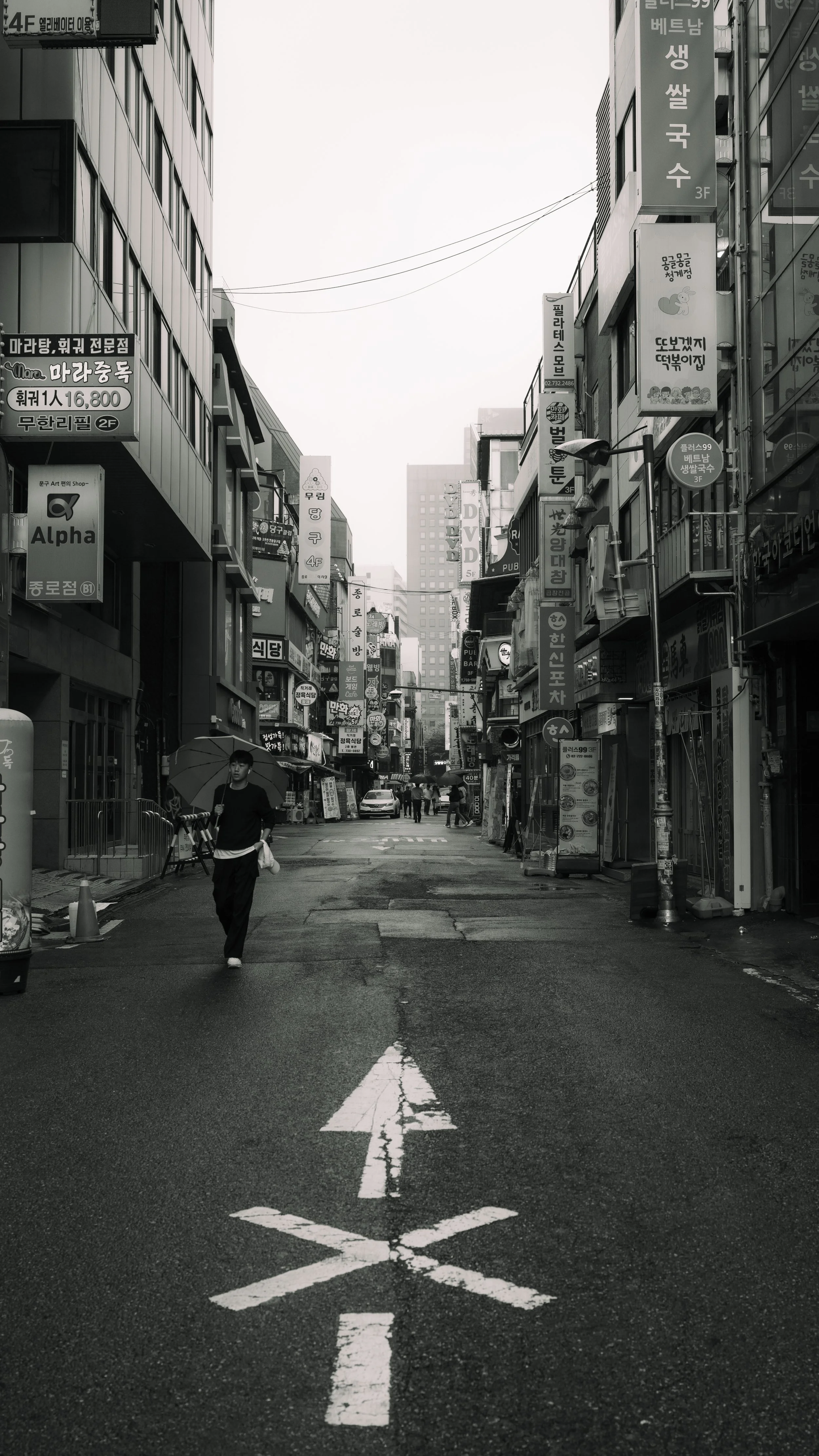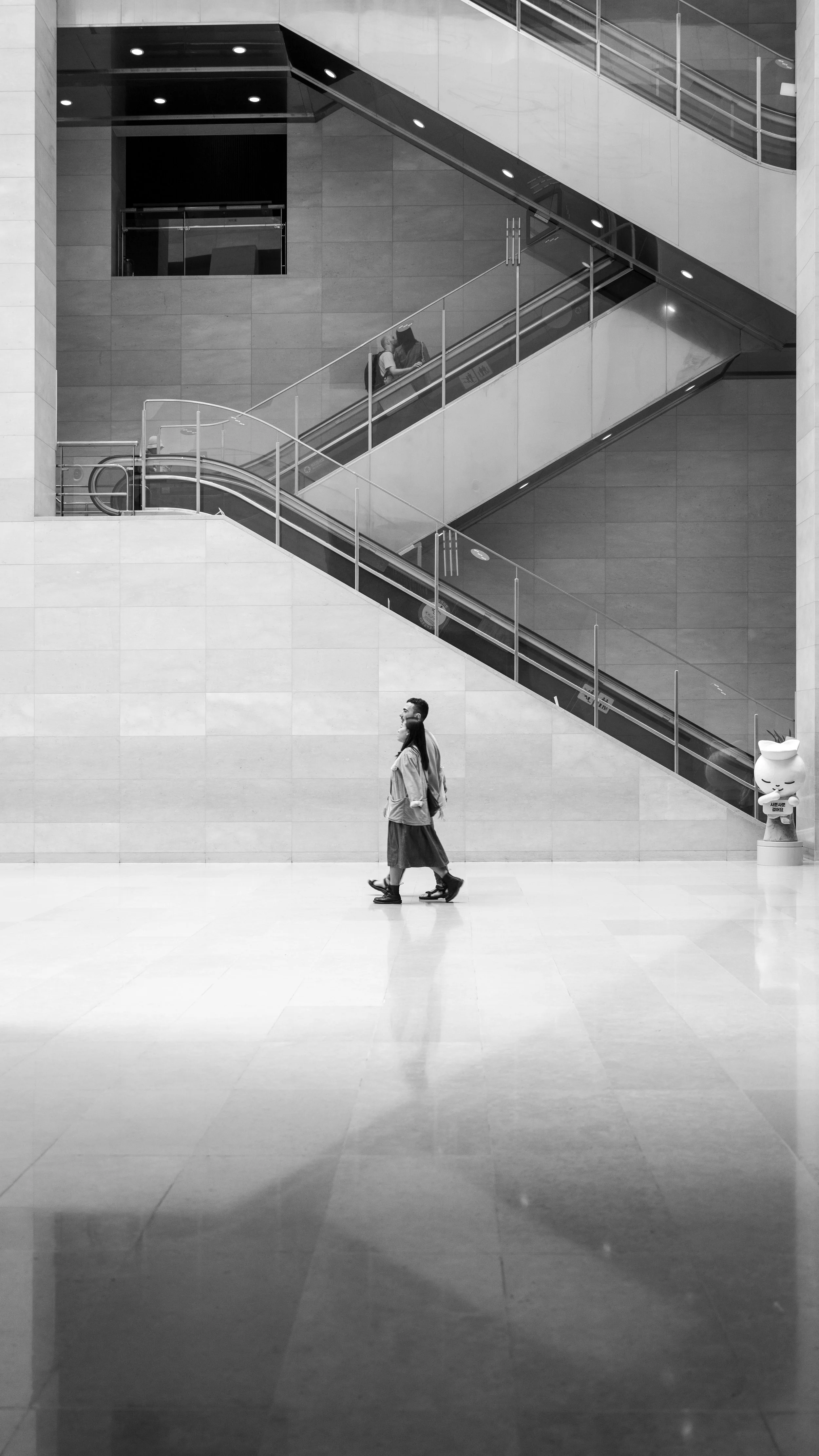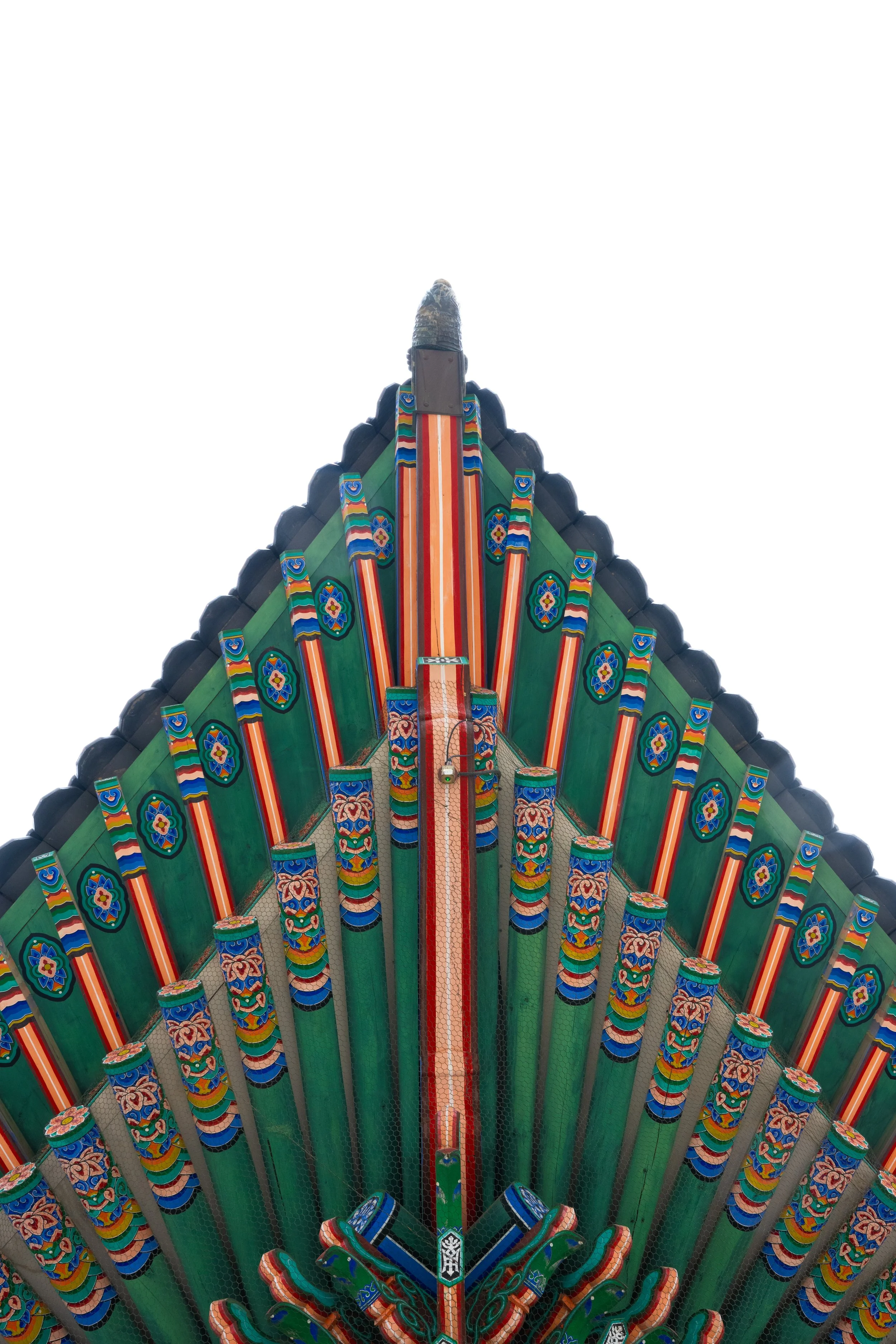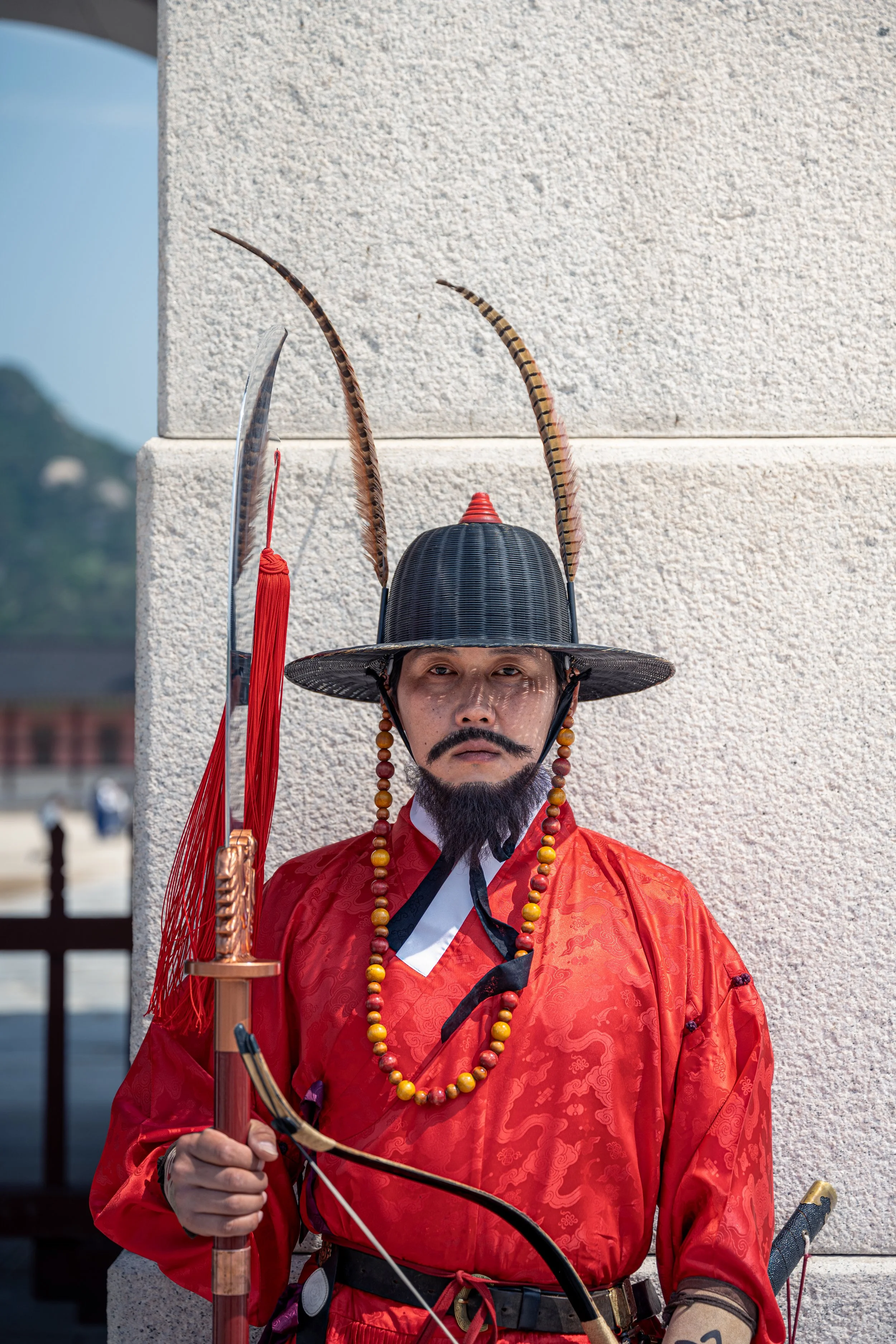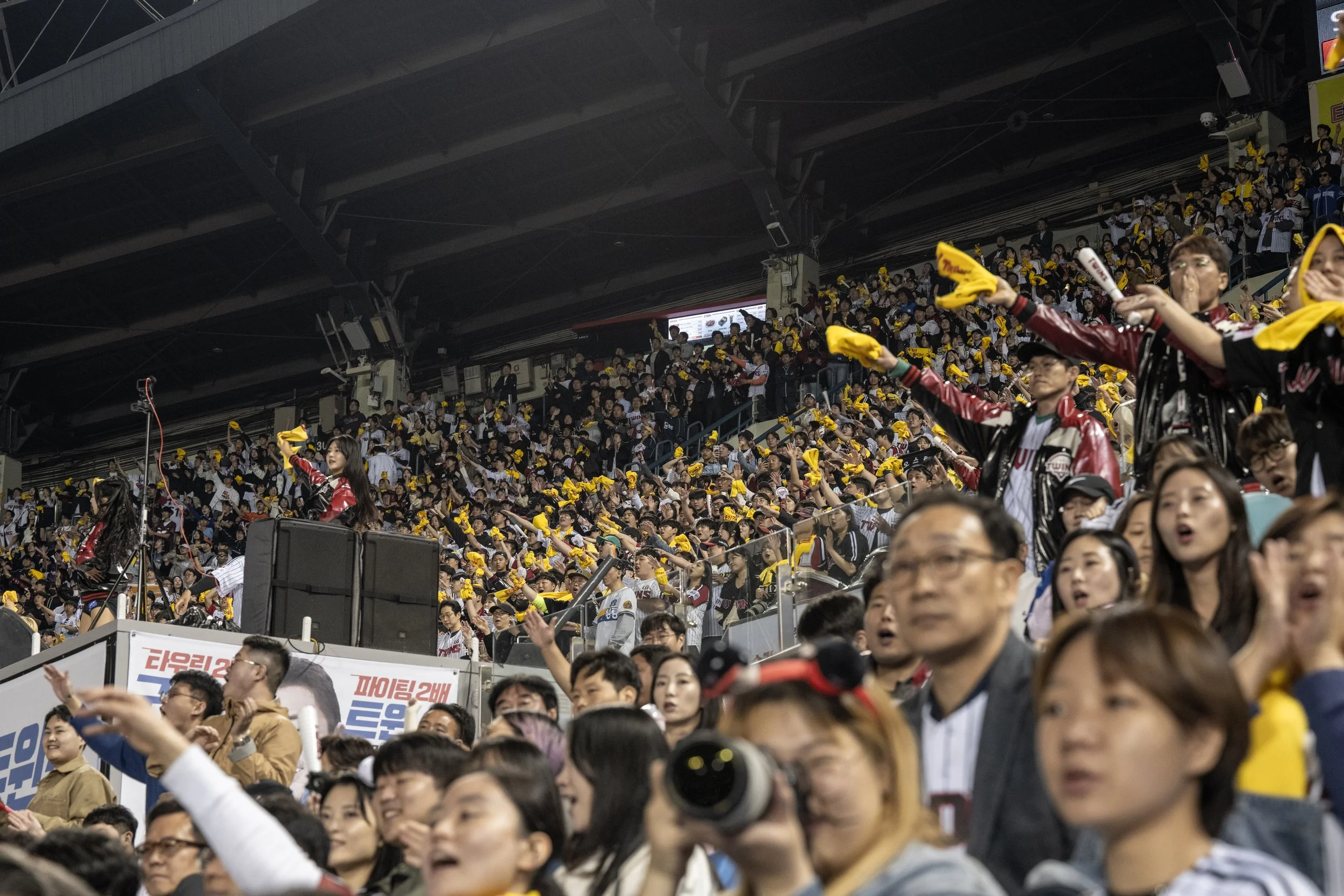South Korea 🇰🇷
Jeju Island
Jeju Island, located off the southern coast of South Korea, is a volcanic island known for its stunning natural beauty, unique cultural heritage, and outdoor adventures. Famous attractions include the towering Hallasan Mountain, picturesque waterfalls, lava tubes, and pristine beaches. Jeju offers a tranquil escape with its lush landscapes, vibrant flowers, and rich local cuisine.
Haenyeo
The Haenyeo of Jeju Island are skilled female divers with a rich history dating back to the 17th century, established due to the island's rocky, infertile land which made farming difficult. Driven by economic necessity and a matriarchal tradition, these women turned to the sea to harvest seafood. This unique cultural practice is still carried on today.
Getting Ready for a dive
Haenyeo diving to catch various types of seafood
Returning after dive
Going through caught seafood
Relaxing post dive
Cutting freshly caught seafood
Storing their equipment under shelter, a more modern approach to the traditional approach of the Bulteok, an outdoor stone structure, usually circular, where Haenyeo gather to prepare for their dives, store their gear, and rest
Diving equipment: Taewak (ball to help maintain boyancy) and Mangseon (net to store caught seafood during dives)
A Bitchang, traditional sickle-like tool used to cut seaweed and pry abalone and other shellfish from rocks during dives.
Stone Structures
Together, the Dol Hareubang, Obaek Janggun, and Sandam represent the diverse and profound ways in which the people of Jeju Island have interacted with their natural environment. Each structure, whether serving as a guardian, a spiritual symbol, or a practical marker, showcases the island’s unique blend of natural history, spirituality, and cultural practices. These stone monuments are not only historical artifacts but also living symbols of Jeju’s enduring cultural identity.
Dol Hareubang, often called "stone grandfathers", carved from the island’s porous volcanic rock. Traditionally placed at village entrances, they serve as guardians to ward off evil spirits and promote fertility. These statues are a symbol of protection and prosperity for Jeju’s inhabitants.
Sandam, stone cairns on Jeju Island, traditionally used as boundary markers, landmarks, and for spiritual rituals in the island's animistic and agricultural practices.
A pair of Sandam
The Obaek Janggun, or 500 Generals, are large stone towers on Jeju Island that represent guardian spirits and are believed to offer protection and ward off evil spirits in accordance with local shamanistic traditions.
Hallasan
Hallasan, the tallest mountain on Jeju Island, rises to 1,947 meters above sea level. This shield volcano is the centerpiece of Hallasan National Park, a UNESCO Biosphere Reserve, renowned for its rich biodiversity and unique alpine flora. With its lush forests, crater lake, and numerous hiking trails, Hallasan is a cherished natural landmark and a symbol of Jeju's rugged beauty and volcanic heritage.
Diverse Flora within the Hallsan National Park
Path leading up to the summit of Hallsan
Morning fog in the Hallsan National Park
Busan
Busan, South Korea's second-largest city, is famed for its beautiful beaches, bustling markets, and vibrant cultural scene. Highlights include Haeundae Beach, Jagalchi Fish Market, and Beomeosa Temple, offering a dynamic mix of urban excitement and natural beauty.
Gamcheon Culture Village A vibrant maze of colorful houses and artistic murals,
Man washing his feet near the beach
Busan Skyscrapers
Samgwangsa Temple Lotus Lantern Festival
The Samgwangsa Temple Lotus Lantern Festival in Busan, South Korea, celebrates Buddha's Birthday with thousands of colorful lanterns illuminating the temple, symbolizing wisdom and compassion.
Seoraksan National Park
Seoraksan National Park, renowned for its stunning mountain landscapes, lush forests, and serene temples, offers a paradise for hikers and nature lovers with its diverse flora and fauna, dramatic rock formations, and picturesque trails.
Seoraksan Sinheungsa Temple
Ulsanbawi Rock
Monk leading prayer at Seoraksan Sinheungsa Temple
Lanterns setup for celebration of buddha’s birthday
Seoul
Seoul, South Korea's bustling capital, is a lively mix of old and new. From towering skyscrapers and cutting-edge tech to ancient palaces and traditional markets, the city offers something for everyone. Explore its vibrant nightlife, savor delicious street food, and immerse yourself in a rich tapestry of history and culture.
older gentleman playing Janggi
crowd watching a Janggi
Temples
Seoul's temples, including Jogyesa and Bongeunsa, offer a serene escape amidst the bustling city. These historic temples are centers of Buddhist practice and culture, featuring beautiful architecture, tranquil gardens, and traditional ceremonies. Additionally, Seoul is home to the vibrant Changing of the Guard ceremony at Gyeongbokgung Palace, showcasing Korea's rich history and traditions.
young girl dressed in a traditional hanbok
changing of the guard at Gyeongbokgung temple
Markets
Seoul's food markets are a sensory delight, offering everything from spicy tteokbokki to savory kimchi. At places like Gwangjang and Namdaemun, you can enjoy fresh seafood, sweet hotteok pancakes, and more, providing an authentic taste of Korean cuisine.
Baseball
Baseball is a major passion in Seoul, with enthusiastic fans packing stadiums to cheer on their favorite teams. Home to the Doosan Bears and LG Twins, the city offers an exciting and lively atmosphere at games, complete with spirited chants, delicious snacks, and a strong sense of community. It's a must-experience for any sports fan visiting the city.




